This summer, under the umbrella of the International League of Conservation Photographers, a large collaborative media effort will take a group of accomplished image makers far, far to the north. The group, made up of seasoned conservation photographers with unique specialities, will travel to Alaska's Arctic National Wildlife Refuge (ANWR) with the goal of capturing the awe and splendor of the nation's wildest and largest tract of publicly owned land.
One of those photographers is Montana-native Pat Clayton. Clayton, who operates under the moniker "Fish Eye Guy Photography", specializes in underwater imagery—not the split-level "oh looky here at what I caught" shots that adorn many a page of fishing magazines these days, but images captured via long days spent in wetsuit and snorkel, often in difficult conditions, during which Clayton immerses himself with the species he sets out to photograph in order to offer a glimpse of them in their natural environment. With nearly 50,000 Facebook followers, Clayton's images are shared and re-shared widely all over the internet. That last underwater image of a native Montana cutthroat trout or Bristol Bay sockeye salmon or Arctic grayling that you liked or shared on Facebook or Instagram the other day? There's a good chance Clayton snapped it.
Clayton describes the ANWR as "Home to caribou herds that stretch as far as the eye can see, a place where polar bears mingle with grizzlies, rivers teem with brightly colored arctic char, and the tundra sprawls for hundreds of undistributed miles ... glacial rivers emanating from peaks that stretch skyward release their till down massive canyons and the northern lights dance in the frigid air." It's a place that many herald as the single greatest wilderness remaining in North America.
Under the current leadership of Donald Trump, Secretary of the Interior Ryan Zinke and Republican lawmakers, the ANWR is now facing its most significant threats since the refuge was founded. After more than 40 years of failed attempts to open America's greatest wilderness to oil and gas drilling—during which Republicans tried no less than 50 times to open ANWR but repeatedly failed, primarily due to an ongoing bi-partisan consensus that drilling was too risky to the ANWR's wildlife, landscapes and native cultures—oil industry pressure on and lobbying of lawmakers finally bore fruit late last year through a provision quietly tucked into the GOP's tax reform plan which opened the long-sought after, 1.5 million acre "parcel 1002" of the ANWR to oil and gas leasing.

It is a law that conservation and environmental groups have vowed to fight via any means necessary, though their primary avenues will likely be battles in the courts and public education campaigns.
As those groups, journalists and other organizations seek to educate and inform the public about the ANWR, imagery of the region's flora, fauna and landscapes will play a vital role in showing everyday Americans what's at stake in this farthest, most remote reach of their country. And Clayton and the other photographers aim to capture just that and share it with the world. Thanks to his speciality, Clayton has been tasked with capturing underwater imagery of the region's native arctic char. Close relatives of salmon, char are anadromous fish that teem in many of the rivers that course through the Arctic National Wildlife Refuge and that play an integral, vital role in its ecosystem.
Clayton's group (one of 8 that will be documenting the ANWR over the course of the summer) will take what Clayton calls the "last float plane of the year" into the headwaters of one of the refuge's char rivers and float their way out, capturing imagery all along the way. It's a time of year when the char enter rivers en masse, adorned in their bright spawning colors, when the tundra bursts red and when the heavy hand of winter begins bearing down on the ANWR. Conditions are expected to be tough, but serve as no deterrent to the dedication of Clayton and the rest of his group.
"Aside from the ecological importance of the area, ANWR matters because the idea of true wilderness, a frontier, the unknown, and something as is, as it has always been is vital for the human spirit. ANWR exists as an example for everything conservationists fight for. It is the cherry on top of our continent, whether any of us every actually make it there, we known it exists as a throwback to what was before us. In ANWR ungulate herds migrate like the buffalo once did, rivers run wild from mountain to sea like before we dammed them down here, undisturbed tundra stretches as far as the eyes can see as our great forests once did. After all that we have lost why seal the fate of one of the last remaining wild places?," Clayton told Hatch Magazine.

Though Clayton has some support from the ILCP and clothing-brand Patagonia, for Pat and many others donating their time to this effort, getting there is the hardest part. To help himself do so, Clayton has started a Kickstarter campaign with the goal of raising a relatively modest amount of cash to help fund plane tickets and other basic logistics. And those who help fund Clayton's trip to the ANWR will receive big, bold prints of some of the images he captures while there as a thank you for their support.
To learn more about the project and to offer your support, visit this Kickstarter page.




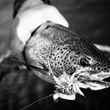
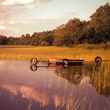
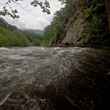
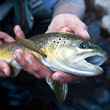



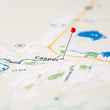



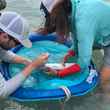
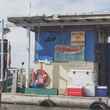



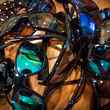
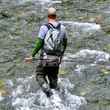
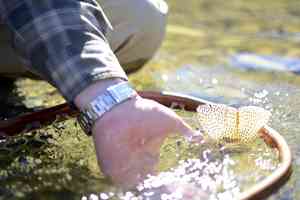
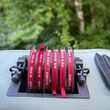


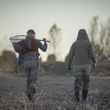

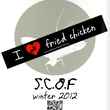
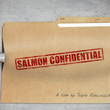
Comments